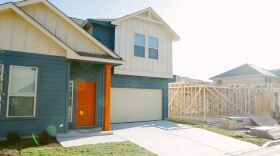For years, many Austin residents have made structural changes to their homes – like turning their garage into an apartment – without a permit. But the City of Austin has been taking a more proactive approach to code compliance lately, especially in Southeast Austin.
"Austin Code is in the neighborhood daily," says Alanna Reed, a spokesperson with the city's Office of Code Compliance.
It used to be that few people faced consequences for permit violations unless a specific complaint was filed. But three things have driven code enforcement in Southeast Austin.
First, a series of balconies collapsed in separate incidents. Then, last year's Halloween flood hit the Onion Creek neighborhood, and hundreds of homes needed to be inspected. Many were so damaged that the city is now buying them.
Reed says the city is not issuing fines to flood survivors. But complying with code is particularly difficult for some in Southeast Austin, which has some of the lowest incomes in town.
Rodolfo Martinez bought his home right before he and his wife had their first child. "Virtually every home here has a garage apartment," he says in Spanish. His home already came with one, and Martinez never considered code compliance issues. He wasn't fined, but for him, the alternative is even worse: converting an apartment he didn't build back to a garage will cost him a few thousand dollars. He says that as a construction worker, he'll at least save on labor costs.
There are 85 homes that are not up to code in Onion Creek alone, not including the homes that the city bought and will demolish. Some of those homeowners face a different issue. When the city buys your house, you are only paid for the square footage you have permits for.
Melinda Ruby works for the city's real estate office, the group buying flooded and flood-prone homes. "There is a process," she says. "If someone does have concerns, saying, 'I think you missed some square footage,' we will go back and take that into consideration and if something was amiss, we certainly will go back to the appraisal and redo it."
Ruby says appraisals are not done by the city. A third party she hired estimates the square footage of a home by looking at which parts of it are heated and air-conditioned. Some of these structures that were built on the fly are not climate-controlled.
Maria Medel rebuilt her home after the flood. She's gotten all the requisite permits, but says she understands why many of her immigrant neighbors did not. "Things are different in Mexico," Medel said in Spanish.
Medel also says that because many families were uninsured, they lacked guidance on how to re-build after the flood. In her case, she says it's taken eight months just to get the city to fix a permit—she says they messed up.




